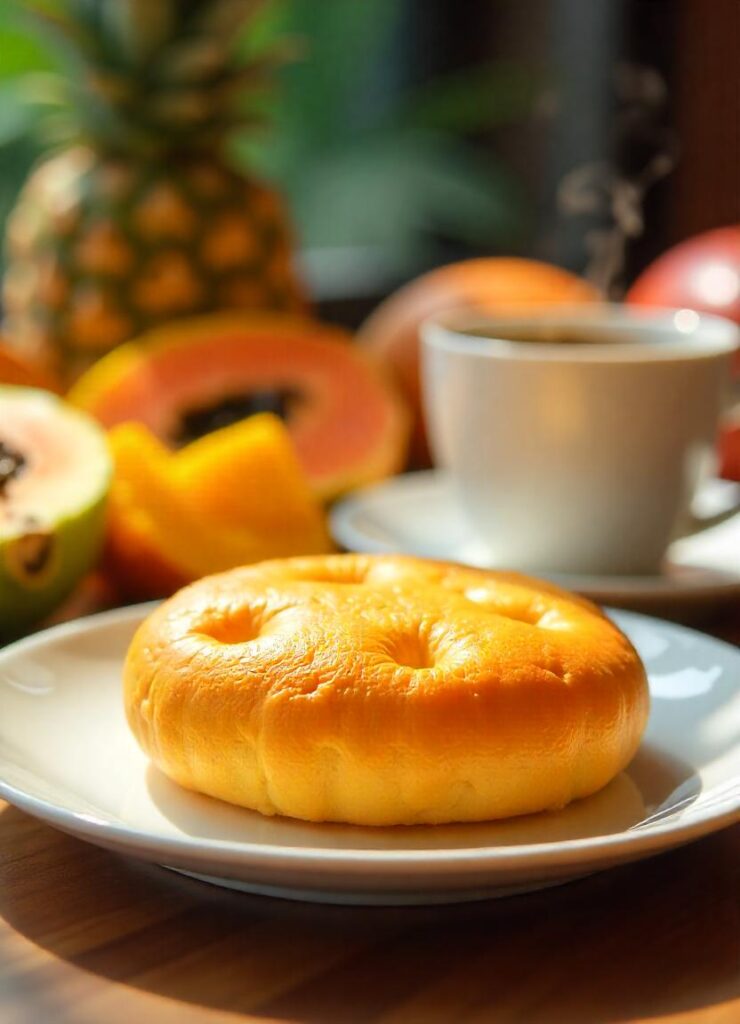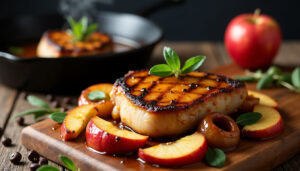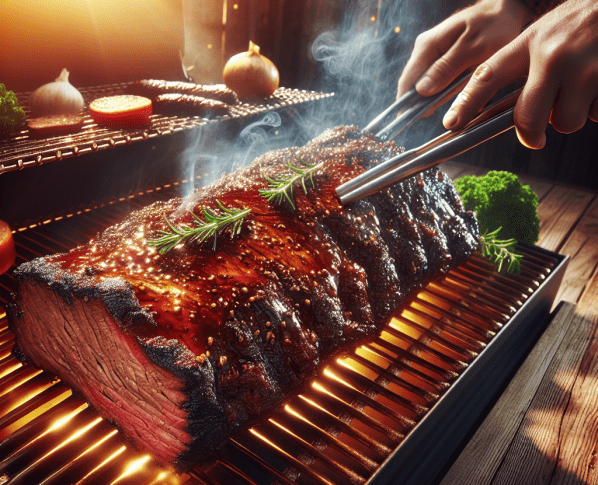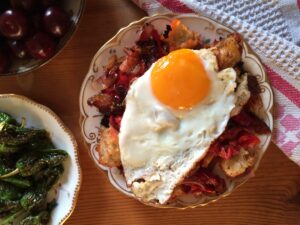Pao de Queijo and the Beauty of Breakfast Abroad
I never take breakfast at home, merely a couple of black filter coffees at my desk, less if I’m out at meetings, a snack (again when desk bound) if I’m actually famished – not often. However when travelling, as I do increasingly these days, I relish breakfast time more than any other. Possibly because it’s so alien in my pedestrian life, maybe a reason too why I savour foods classified as breakfast or brunch most of all. There’s something transient about the idea of breakfast that I think I’ve romanticised.

When travelling, breakfast becomes my time to gather together my bearings before embarking apon the new, unfamiliar, sometimes daunting. To check emails and social media (at least I’m honest). Ready myself for the day ahead. I find it can also be an unrivalled insight into the culture of an area, an opportunity to absorb the ebb and flow and tone. I wonder if my recent (ish) love affair with coffee and cafe life has something to do with it’s own cultural punctuation and my enjoyment of it.
European buffet breakfasts can generally go do one with their homogenised eurosludgy mash up. I’ve recently opted to swap depressing, grey suit filled shells for airbnb and consequently dodged the accompanying complimentary disaster by hunting out nearby and illustrious cafes for my breakfast fix. This a double win, as it allows me the chance to request recommendations from the staff – always my top tip for traveling that – get recs from places you already like, staff are more likely to be into/appreciate the same things. In this way I can ricochet around a city for days, dining on hot tips from hotter kids.

A buffet breakfast is not always to be avoided though and never an excuse to simply lard it up whislt away from home as you see so many tourists do, gorging for no reason than sheer gluttony, hand to mouth with mindlessly inert movements. Having just returned from a trip to South West Brazil however, I can heartily condone a table spilling with exotic (to me) dishes, fruits that I’ve never seen so ripe and juices I’ve never before come across. Never mind that some of the dishes (explained to me later) are a local spin on things prepared entirely for expectant Gringos like me. An invitation to try a little bit of everything is not one I have power to refuse, taking small portions of everything. Just to try. To explore and discover. No doubt looking like that greedy tourist in the process. Hi waves
You might also like: Gypsy Tart with Cachaça Lime Curd
Amongst a veritable feast of papaya, melon and mango, eggs and sobrassata fried with onions (not the supple salami we get but a firmer sliced sausage – this being the thing presented for the Gringos benefit – locals would never eat meat for breakfast) and local cakes enriched with yoghurt or mayo, one topped with a coconut crust is particularly good, a banana bread served with banana fritters is near moist perfection. Juices verge on the joyfully ridiculous; watermelon and mango are favourites and then I have my cashew epiphany. Asking what one particularly sweet nectar is, unable to match it to anything I’d encountered in my succinct juice repertoire, I’m told Caju. I furrow my brow at the unusual word and it’s repeated to me, caju, CAJU, you know like the nut, cashew. Aaaah. I don’t actually get it until our guide pulls up google images. Mind. Blown.
Do it.
One of my favourite breakfast discoveries is that of a recurring pairing of cheese with sweet. It’s one that’s repeated for dessert and as snacks throughout the day.
At breakfast it’s a firm, pale and unsalty cheese that I smear with guava jam, for a snack it’s the local Minas cheese served with tiny glasses of thick sweet coffee. A snack of Brazilian sweets happens twice; one of the traditional flavoured bonbons, Brigadeiro, typically chocolate but here I love the sweet cheese version filled with a guava paste; the other is at a cafe where we eat tiny cheesecakes topped with guava swhirls.
My favourite of all though is a combination we eat nearly twice daily while in Minas, that of a firm white cheese, they call it Ricotta but it’s more of a less salty, less crumbly feta, served with dulce de leche. I had no idea there were so many riffs on the sweet stuff; some of it searingly sweet and dark, some creamy, some sort of curdled, it appeared without fail at the end of every meal. Sometimes a humble jar would appear, lid askew, but more often it would fill glamorous glass vessels extravagantly, surrounded by much smaller plates laid with triangles of that white cheese and bulbous glass jars filled with candied figs – I’m aware this was offered to us as guests.
Consistent throughout my my week long induction to Minas Gerais is the exposure to their peo de queijo, little carby, cheesy puffs that you couldn’t help but notice as they sat prominent on every counter of the airport at Sao Paolo. They reappeared as palate cleansers between rounds of coffee cupping, at many snacking intervals and, joy! There they were again at the breakfast buffet.
You might also like: Pancetta, Peach, Bourbon & Thyme Breakfast Buns
Not bread. But not, not bread. I did a smidge of research and found them to be made from cassava root flour, that’s weirdly squeaky in it’s packet, with cheese and oil. They vary in texture from the soft, to almost quaver-like crispy and some near solid – their unifying feature is (or should be) a squidgy middle, the best are crisp with a crackle across the surface and gooey middle.
At first I ate them as they were, enthralled enough to have so quickly discovered a new thing. Then we visited an incredible speciality cafe run by one of the co-ops and we were served a small basket-full of the puffs accompanied by little dishes of jam. Well, now this changed everything. Another time they were served fancy like, topped with sesame seeds alongside a chilli and honey dip before dinner. If I’d stayed any longer I imagine I’d have witnessed them dunked into or filled with dulce de leche as seems to be the custom here. I’ve since been treated to Kaya toast and fancy they’d be rather nice with coconut jam.
I bought packet mix of the bread on a whim at the airport. Turns out it was simplicity incarnate and I have a sneaky feeling that’s what most of the locals use as it produces an almost perfect version of the buns. (I think I’m joking here). Feeling lacklustre after acute sickness upon returning, I manage a couple feebly stuffed in typical (me) fashion with mortadella and n’duja.
I’d brought a kilo of the flour back from Brazil, Polvilho Doce is on the packet, so I thought I really ought to attempt a proper recipe too. Deciding to use the Brazilian butter I’d also brought back in place of oil and Minas cheese rather than the suggested parmesan. Funny thing this, but most of the products of Brazil I’ve encountered have a faintly parmesan-ey aroma. The flour, butter and cheese all smell deeply, well, a little vommy, if we’re being honest. Hmm. Update on my Minas cheese while I’m here is that it’s getting funkier and firmer by the day. So not a bad sub for parmesan here to be fair.
These were again as good a version as any I’ve tried. I think they’d be good with chilli and or herbs too. I ate mine, while still warm and gooey, filled with some fatty prosciutto & jabuticaba jam – this is the jam that I’m told is typically served with the buns and a jar of which automatically came back with me. Jabuticaba is a firm, round, medium sized fruit that grows on trees, the jam is super sweet and tastes somewhere between prune and plum.
I followed this recipe from BBC Food – they all seem much of a muchness to be honest – and all very simple
- 250ml Full fat milk
- 125g Butter
- 300g tapioca or cassava flour
- 2 eggs
- 100g cheese
Boil the butter with milk until the butter is melted and the mixture is starting to froth and bubble lightly. Allow to cool slightly then pour in the flour. Keep mixing until everything cools down. It’s at this point that I remember I’m not working with actual flour as the mixture has an unusual glutinous quality. Add the eggs one at a time and beat until fully incorporated and the mixture has become glossy. Finally add the grated cheese and mix again until fully incorporated.
Scoop up egg sized pieces of dough, roll between your hands roughly and place on a greased baking tray.
Bake in an oven preheated to 220 degrees for around 30 minutes.






